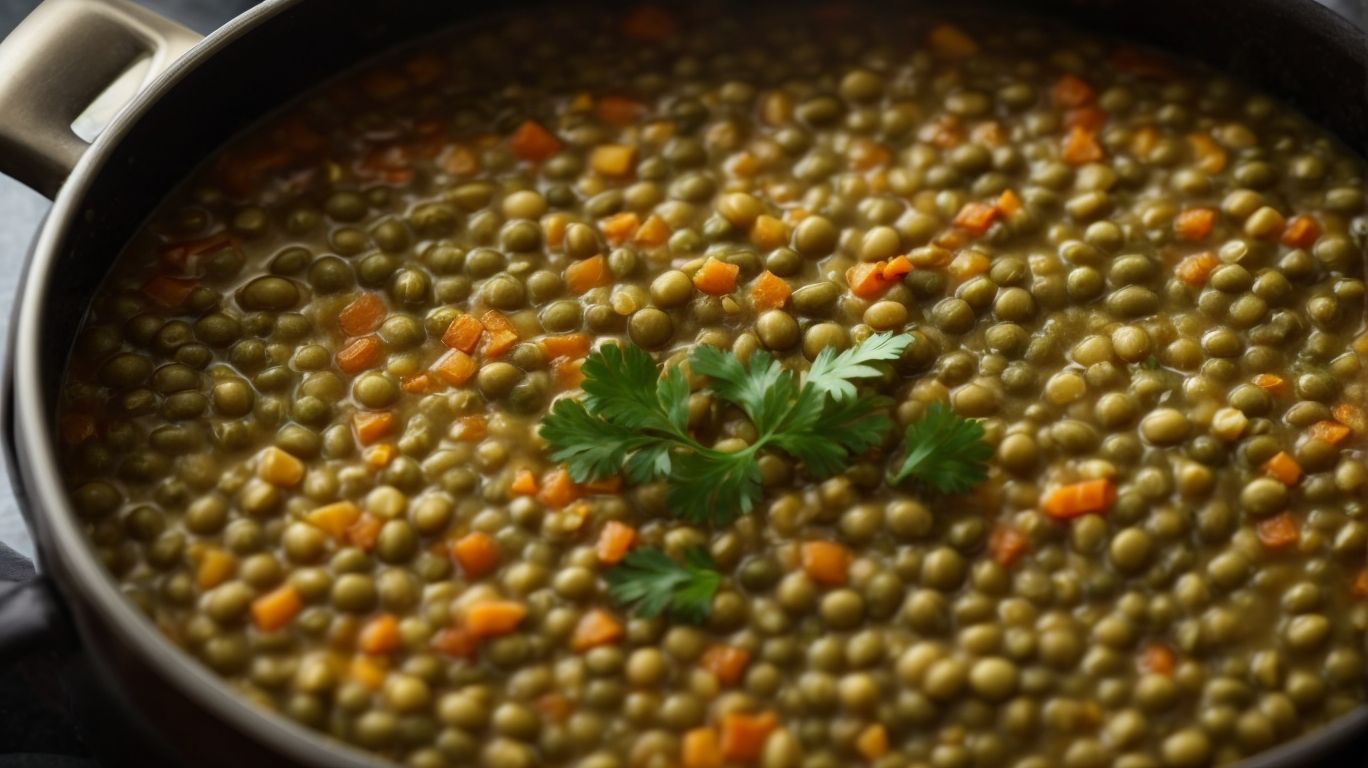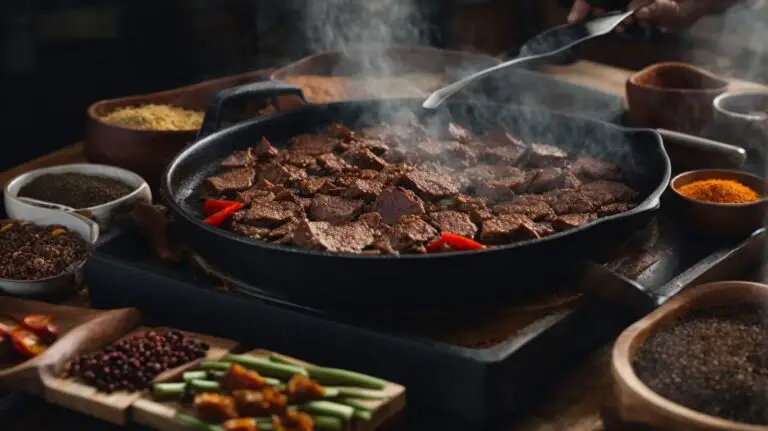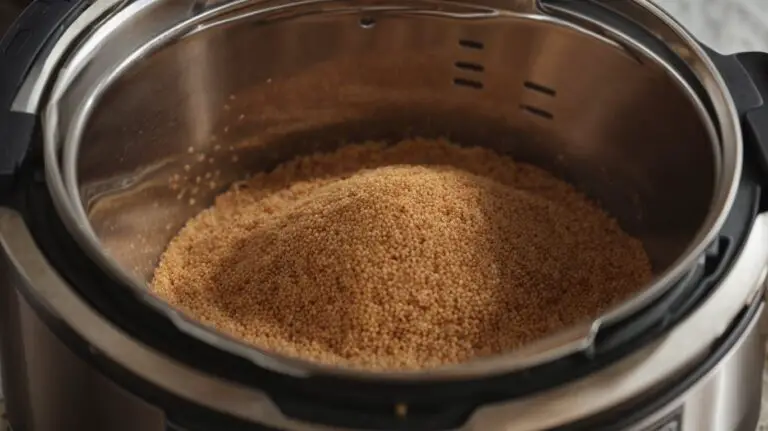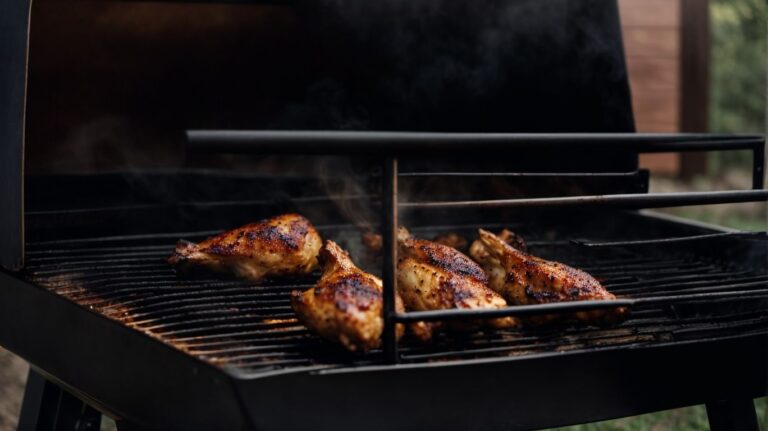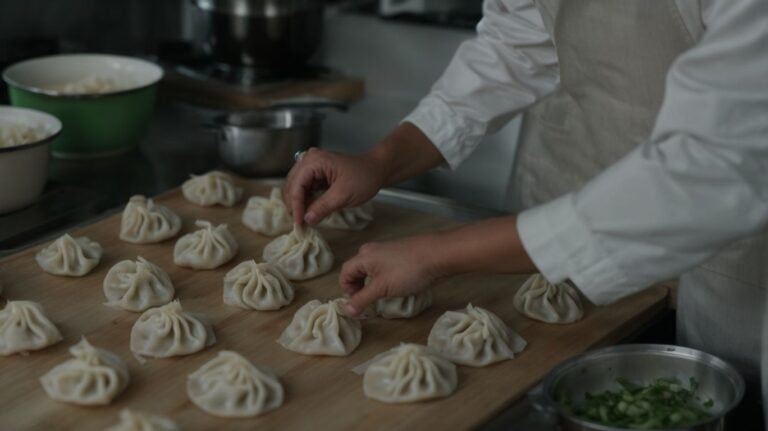How to Cook Mung Beans Without Soaking?
Have you ever wondered what mung beans are and why you should cook them?
We will explore the world of mung beans and share with you a step-by-step guide on how to cook them without soaking. From rinsing to serving, we will walk you through the process of preparing delicious mung beans.
Discover tips on how to enhance the flavor of your mung beans and creative ways to use them in dishes like soup, salad, curry, and hummus.
Stay tuned to uncover the secrets of cooking mung beans like a pro!
Key Takeaways:
What are Mung Beans?
Mung beans, also known as green mung beans, are a versatile legume commonly used in various cuisines worldwide.
These beans come in different varieties, such as split, black, and yellow mung beans, each offering unique flavors and textures to dishes. Their popularity stems from their nutritional value, affordability, and ease of cooking. In Indian cuisine, mung beans are often featured in dal dishes or rice-based meals. In Asian cuisine, you can find them in soups, salads, and desserts, showcasing their adaptability across a wide range of recipes. Whether sprouted, boiled, or ground into flour, mung beans add a wholesome touch to meals, making them a staple ingredient in many households.
Why Should You Cook Mung Beans?
Cooking mung beans offers a myriad of health benefits, making them a nutritious choice for plant-based diets.
Mung beans are rich in fiber and protein, making them an excellent addition to Vegan and gluten-free diets. The high fiber content in mung beans aids in digestion, promotes gut health, and helps in maintaining a healthy weight. The protein content in these beans is essential for muscle maintenance and repair. This plant-based protein is a valuable alternative for individuals following a vegan lifestyle, ensuring they meet their daily protein requirements without relying on animal products.
How to Cook Mung Beans Without Soaking?
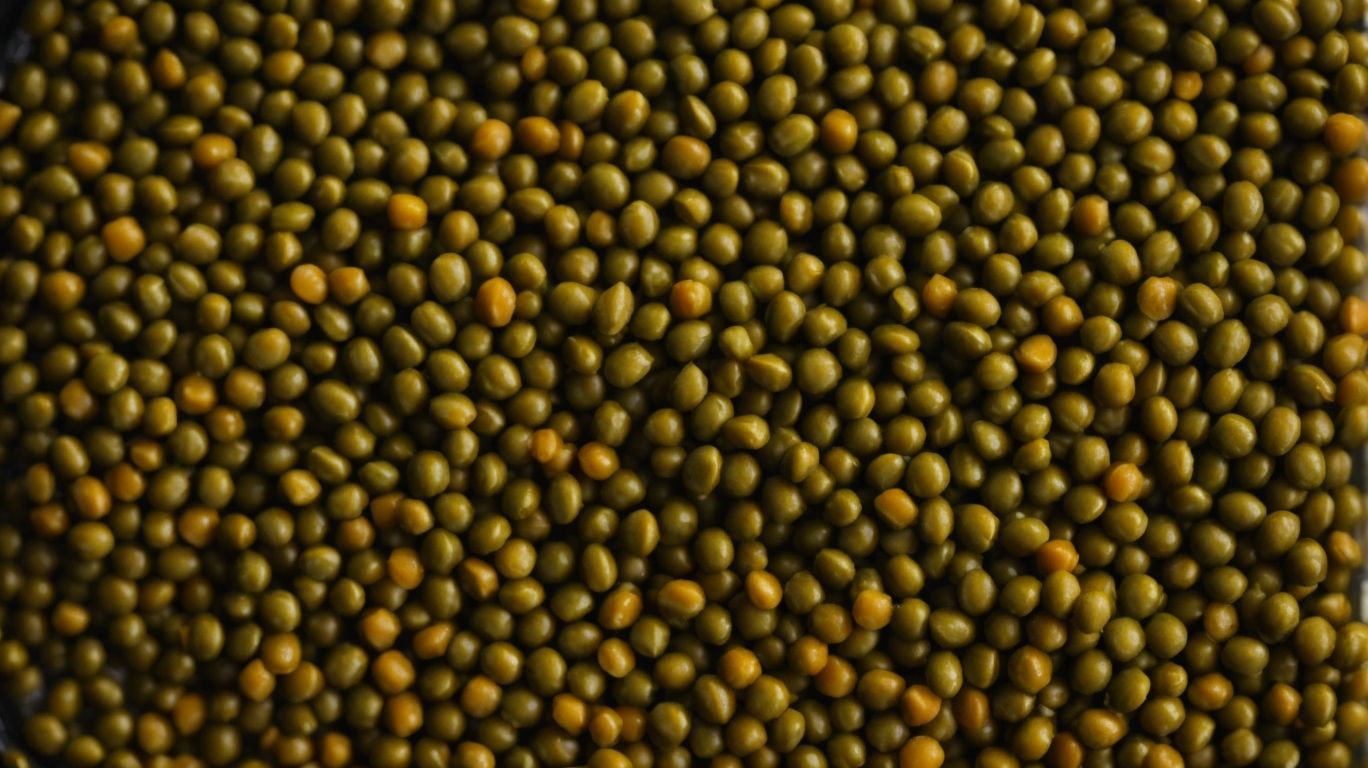
Credits: Poormet.Com – Matthew Robinson
Cooking mung beans without soaking can be achieved efficiently using methods like the Instant Pot or stovetop.
Step 1: Rinse the Mung Beans
Before cooking mung beans, it is essential to rinse them thoroughly to remove any impurities or debris.
Rinsing mung beans not only enhances their flavor but also helps to remove any dirt, dust, or other particles that may have accumulated during storage or processing. To ensure cleanliness, start by placing the mung beans in a bowl and covering them with room temperature water. Let them soak for about 2-4 hours, or ideally overnight, which softens the beans and makes them easier to rinse.
Step 2: Boil the Mung Beans
Boiling mung beans is the next step in the cooking process, where they are simmered until they reach desired tenderness.
When boiling mung beans, it is crucial to maintain the right water-to-bean ratio in order to ensure they cook evenly. A general guideline is to use about three cups of water for every one cup of dried mung beans. Once the beans are washed and rinsed, place them in a pot with the appropriate amount of water. Set the stovetop to medium heat, allowing the water to come to a gentle simmer. It’s essential not to boil the beans too vigorously as this can result in uneven cooking.
The cooking duration for mung beans will vary depending on their freshness and size. On average, it takes approximately 20-30 minutes for mung beans to reach the desired tenderness. Stirring occasionally during the boiling process can help ensure uniform cooking. Achieving the right level of tenderness is key to enjoying the beans in various dishes, whether it’s a hearty stew, a flavorful curry, or a nutritious salad.
Step 3: Simmer the Mung Beans
Simmering the mung beans over low heat allows them to cook gradually and absorb flavors from added ingredients.
This slow cooking process not only helps the beans retain their shape and texture but also intensifies the depth of flavors in the dish.
When simmering mung beans, it’s vital to stir occasionally to prevent sticking and ensure even cooking. To adjust the cooking time, consider soaking the beans beforehand to reduce the overall cooking duration.
Varying the cooking time can influence the final texture, with longer cooking resulting in softer beans, ideal for soups, and shorter cooking times yielding firmer beans suitable for salads or stir-fries.
Step 4: Check for Doneness
To ensure the mung beans are cooked to perfection, it is crucial to check for doneness by assessing their tenderness.
When checking the tenderness of the mung beans, aim for a texture that is soft but still slightly firm, offering a pleasant bite without being too mushy. A well-cooked mung bean should hold its shape and not disintegrate completely when stirred or pressed. If the beans seem too hard, continue cooking and check every few minutes until they reach the desired consistency. On the other hand, if they become overly mushy, reduce the cooking time and keep a close eye on them to prevent overcooking.
Step 5: Drain and Serve
Once the mung beans are cooked to the desired level, drain any excess liquid and prepare them for serving in your chosen dish.
To drain the mung beans, simply place them in a colander or sieve and run them under cold water to wash off any loose starch. Allow them to sit for a few minutes to ensure all excess liquid is removed. Now, these versatile legumes are ready to elevate your culinary creations.
Whether you enjoy them as a protein-rich addition to salads, a flavorful component to soups and stews, or as the star of a satisfying curry, mung beans offer a world of options. Consider combining them with aromatic spices, vegetables, and grains for a wholesome and delicious meal.
- Create a refreshing mung bean salad with cucumbers, tomatoes, and a zesty lemon dressing.
- Add them to a hearty vegetable soup for an extra dose of protein and fiber.
- Cook them in a fragrant coconut milk broth with spices for a comforting and aromatic mung bean curry.
Tips for Cooking Mung Beans Without Soaking
Enhance your mung bean cooking experience with these valuable tips to achieve optimal results without the need for soaking.
Tip 1: Use Fresh Mung Beans
Utilizing fresh and high-quality mung beans is crucial for achieving the best flavor and texture in your dishes.
In terms of cooking with mung beans, starting with fresh produce can make a world of difference. The flavor of fresh beans is more vibrant and the texture is firmer compared to older beans, providing a delightful crunch when cooked just right.
Selecting fresh mung beans ensures that you get the optimal flavor profile and nutritional benefits from your dishes. In terms of storage, it is recommended to keep fresh mung beans in a cool, dry place to maintain their quality. Avoid storing them in areas with high humidity to prevent spoilage and ensure longevity. Proper storage guarantees that your mung beans stay fresh for longer periods, allowing you to enjoy delicious meals with premium ingredients.
Tip 2: Use a Pressure Cooker
Opting for a pressure cooker can expedite the cooking process and ensure efficient preparation of mung beans without compromising on flavor or nutrients.
Using a pressure cooker is a game-changer when it comes to preparing delicious mung bean dishes in a fraction of the time it would usually take. The pressurized environment inside the cooker allows the beans to cook faster while retaining their natural taste and nutritional value. By adjusting the pressure settings and cooking times according to the recipe, you can achieve perfectly cooked mung beans every time, saving you valuable time and energy in the kitchen.
Tip 3: Add Flavorings to the Cooking Water
Infusing the cooking water with aromatic spices and herbs can elevate the flavor profile of mung beans, adding depth and complexity to your dishes.
Adding a pinch of cumin and coriander seeds can bring a warm earthiness to the mung beans, while a dash of turmeric can impart a beautiful golden hue and a subtle peppery flavor.
Fresh cilantro or parsley added towards the end of cooking can lend a fresh and vibrant touch. Alternatively, for a more robust taste, try tossing in some smoked paprika or a hint of cayenne pepper.
Each spice or herb introduces its unique essence, transforming the humble mung beans into a culinary delight.
Tip 4: Use a Ratio of 1:3 for Mung Beans and Water
Maintaining a balanced ratio of 1:3 for mung beans and water ensures the ideal cooking environment for achieving tender and flavorful results.
For those looking to experiment with different textures or flavors, adjusting the water-to-bean ratio can make a significant difference in the final dish. By increasing the water slightly, you can achieve a creamier consistency, perfect for soups or stews. On the other hand, reducing the water amount creates a firmer texture, great for salads or grain bowls.
It’s crucial to remember that the 1:3 ratio serves as a reliable starting point, offering a well-rounded cooking experience. To customize the dish to your liking, consider subtler adjustments to find the perfect balance of tenderness and moisture.
Ways to Use Cooked Mung Beans
Explore the culinary versatility of cooked mung beans through these creative and delicious recipes, ranging from soups to salads and flavorful curries.
Mung Bean Soup
Mung bean soup is a hearty and comforting dish that combines the earthy flavors of mung beans with aromatic spices and wholesome ingredients.
This nutritious soup is not only delicious but also easy to make. To prepare this dish, start by soaking the mung beans overnight to ensure they cook evenly. The key ingredients include onions, garlic, carrots, and celery for added depth of flavor. A medley of cumin, turmeric, and coriander elevates the taste profile, creating a harmonious blend of spices. A squeeze of fresh lemon juice at the end brightens the flavors and adds a subtle tanginess.
Mung Bean Salad
A vibrant mung bean salad offers a refreshing mix of textures and flavors, combining cooked mung beans with crisp vegetables and zesty dressings.
One way to elevate the taste profile of this salad is by adding a hint of citrus zest to the dressing for a burst of freshness. Incorporating some toasted nuts like almonds or walnuts can provide a delightful crunch that complements the softness of the beans.
For those looking to experiment further, consider swapping out the traditional vinaigrette for a creamy avocado dressing or a tangy yogurt-based sauce. These alternative dressings can introduce a whole new dimension of creaminess and richness to the salad.
Mung Bean Curry
Mung bean curry is a fragrant and spiced dish that captures the essence of Indian cuisine with its rich blend of flavors and comforting textures.
This classic Indian dish is a popular choice among vegetarians and non-vegetarians alike due to its versatility and robust flavors. The key to a delicious mung bean curry lies in the aromatic spices such as cumin, coriander, turmeric, and garam masala, which create a symphony of flavors that will tantalize your taste buds.
A traditional method of preparing mung bean curry involves soaking the beans overnight to soften them before cooking. This not only reduces cooking time but also enhances the overall texture and taste of the dish.
One customization option for this curry is to add coconut milk for a creamy and indulgent twist to the traditional recipe, or to include vegetables like spinach or potatoes to provide extra nutrition and flavors.
Mung Bean Hummus
Mung bean hummus is a creamy and flavorful dip inspired by Middle Eastern cuisine, perfect for snacking or as a tasty appetizer.
One of the key characteristics of mung bean hummus is its smooth texture, which pairs wonderfully with pita bread, fresh vegetables, or even as a spread on sandwiches. To elevate the flavors, you can customize the hummus by adding roasted garlic, sun-dried tomatoes, or a drizzle of extra virgin olive oil. For a bit of heat, sprinkle some smoked paprika or a pinch of cayenne pepper on top. Mung beans are rich in protein and fiber, making this hummus a nutritious snack option for any time of the day.
Frequently Asked Questions
What are mung beans and why are they a popular ingredient in vegan and vegetarian recipes?
Mung beans, also known as green gram or golden gram, are a type of legume that are often used in vegan and vegetarian cooking as they are a good source of protein and other essential nutrients.
Can you cook mung beans without soaking them first?
Yes, you can cook mung beans without soaking them first. However, soaking them can help reduce cooking time and make them easier to digest.
What is the best way to cook mung beans without soaking?
To cook mung beans without soaking, start by rinsing them thoroughly under running water. Then, place them in a pot with water and bring to a boil. Reduce the heat and let them simmer for about 20-30 minutes until they are tender.
How can I make sure my cooked mung beans have a soft texture and are not too hard?
To ensure your mung beans have a soft texture, make sure to cook them on low heat and check them periodically to avoid overcooking. Adding a pinch of baking soda can also help soften the beans.
Can I use a pressure cooker to cook mung beans without soaking?
Yes, a pressure cooker is a great tool for cooking mung beans without soaking. Simply add the mung beans and water to the pressure cooker and cook on high pressure for about 10 minutes.
Are there any other methods for cooking mung beans without soaking?
Aside from using a pressure cooker, you can also use a slow cooker or an instant pot to cook mung beans without soaking. These methods may take longer, but they are great for multitasking and can result in perfectly cooked mung beans.

